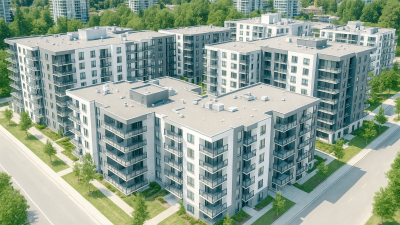Spring usually brings a fresh wave of optimism to the real estate market—but this year, the typical momentum is tempered. While some developers are testing the waters with new launches, most are approaching the season with restraint thanks to ongoing economic uncertainty, the coming federal election, and a growing group of exceptionally cautious buyers. As a result, a notable shift in strategy has set the tone for what’s expected to be a slow, but steady, spring.
“Developers spent February monitoring the market and making ‘go or no-go’ decisions on new projects,” says Garde MacDonald, our Director of Advisory at MLA Canada. “With prospects exhibiting continued patience and extreme price sensitivity, the presale market remains stagnant. We anticipate a quiet spring presale market as overarching uncertainty persists with tariffs and equity markets that are now in technical corrections.”
Let’s unpack what that means for the spring market—and what we’ll be watching closely.
Market Conditions: Muted Activity, But Not Without Opportunity
According to our latest data, eight presale projects launched in February, releasing 602 units across Greater Vancouver. Just over 90 of those units sold, putting absorption at a modest 15%—a far cry from last year's 50% absorption rate.
This is largely due to a confluence of factors: buyers are taking their time, comparing projects and pricing, and in many cases, broadening their search beyond Metro Vancouver to areas like the Fraser Valley and Okanagan as they search for value. Developers, in turn, are staying nimble. Many are introducing early incentives or holding off altogether, postponing planned launches to later this year or into 2026.
In late February, the province introduced a pilot program allowing developers of large residential projects (100+ units) to extend their early marketing period under the Real Estate Development Marketing Act (REDMA) from 12 to 18 months, offering more breathing room in this uncertain market.
This move provides more flexibility for buyers and developers alike—but it also underscores just how much additional support the market needs to maintain traction.
Who’s Buying in 2025?
While activity is slower, it’s not without purpose. First-time homebuyers remain a meaningful part of today’s market, especially those looking to leverage new federal policies such as extended amortizations and reduced down payments for insured mortgages. With affordability still a significant hurdle, these programs offer a way in for younger Canadians who might otherwise be sidelined.
Adding to the momentum: the upcoming federal election on April 28th. Housing affordability has taken centre stage, with candidates proposing new initiatives aimed at first-time buyers. Promises include expanded access to 30-year insured mortgages, new tax incentives, and even more aggressive supply targets—all of which could influence confidence and purchasing decisions in the months ahead.
On the investor side, movement is more restrained. Buyers are wary of soft price growth in key areas and are looking for long-term fundamentals over short-term speculation. “Many are looking beyond a single market,” notes MacDonald, “searching across different regions to maximize value, which further delays early sales activity.”
Overall, the tone among buyers is measured—but not disengaged. They're watching. They’re comparing. And they’re waiting for the right mix of value, timing, and confidence to make a move.
What’s Selling?
The Metro Vancouver market continues to carry the lion’s share of presale activity, though the geography of interest is shifting. Transit-oriented developments remain attractive for both end-users and investors, particularly as proximity to rapid transit offers long-term value in a cost-conscious market. Projects along the Canada Line, Broadway Corridor, and Surrey-Langley SkyTrain extension are seeing the most traction, while affordable pockets in Burnaby, New Westminster, and even East Vancouver are also holding strong, particularly for entry-level buyers.
In terms of product, smaller homes with efficient floorplans—studios, one-bedrooms, and junior twos—are outperforming other options due to lower unit prices. Buyers are laser-focused on value, gravitating toward efficient layouts with thoughtful finishes. Developers who prioritize liveability and design within compact footprints are being rewarded with stronger absorption overall.
Meanwhile, in the Fraser Valley and Okanagan, price-sensitive buyers are finding themselves increasingly drawn to lifestyle-oriented communities with a lower barrier to entry. Though the pace is slower than in recent years, these markets continue to appeal to retirees, remote professionals, and young families seeking space and amenities at a lower price per square foot than Metro Vancouver.
Developer Strategies: Incentives, Flexibility, and Patience
With absorption rates still underperforming, developers are leaning into more adaptive strategies. Incentives like flexible deposit structures, early-purchase bonuses, and move-in credits are no longer outliers: they’re becoming the norm.
“Short of dropping prices, the number one sales incentive that is leading to success is a lower, or extended, deposit structure. Effectively, when developers lower the barrier to entry—in this case, downpayment—it becomes easier to rationalize a presale purchase,” says MacDonald.
Some developers are also scaling back their initial releases, opting for smaller phase launches to test market conditions before committing to larger rollouts. It’s a strategy grounded in pragmatism, aimed at building confidence among buyers without flooding the market.
“There’s a lot of reassessing happening,” adds MacDonald. “About half of planned launches have now been pushed to later in the year or even next spring.”
In this climate, patience is key. Developers who approach 2025 with flexibility and a nuanced understanding of buyer motivations will be better positioned to capture demand as confidence begins to return.
A Season of Cautious Optimism
Spring may be in the air, but don’t expect a dramatic thaw in BC’s presale market just yet. With interest rates holding relatively steady and CPI readouts showing mixed signals, both developers and buyers are stepping into the season with one foot in and one foot out.
Still, the fundamentals for long-term growth remain strong. Buyers are engaged, developers are adaptable, and meaningful policy shifts are underway. The market may not be red hot, but it’s very much alive.
As always, our team at MLA Canada will continue tracking buyer sentiment, launch activity, and policy impacts in real time. Stay tuned for more insights in our upcoming monthly reports.



